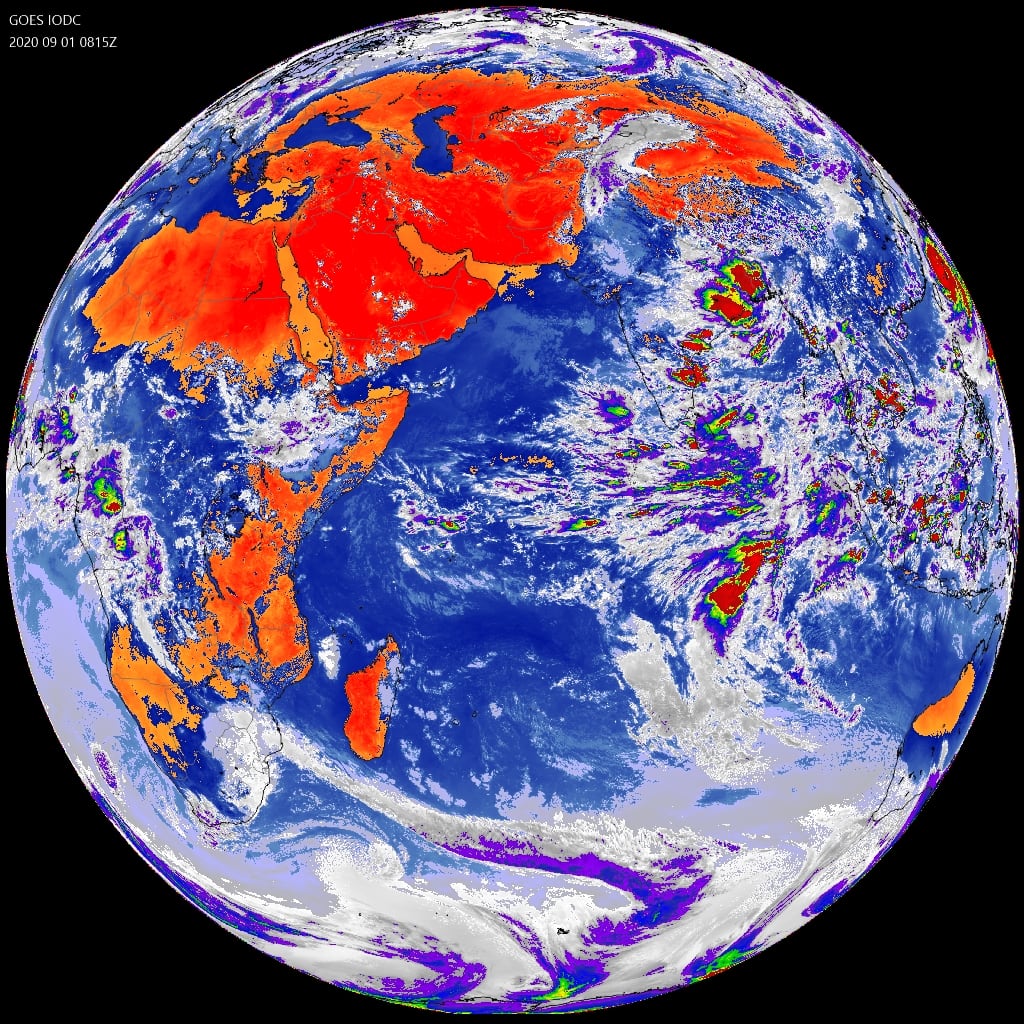Surging security demands, compounded by a defense budget top line likely to decline, require that the U.S. Department of Defense invest in new capabilities that maximize its combat power. A prime example is the Electro-Optical/Infrared Weather System, which uses a cutting-edge design of low-Earth orbiting sensors.
Scheduled to be deployed in 2025, EWS will bring 21st century weather capability to modern war fighters. While not as well known as programs for advanced fighters, bombers and ships, EWS will be foundational to the success of future operations in all war-fighting domains regardless of the military service. As such, it should be fully funded and, if possible, accelerated.
Wartime experience elevated the value of weather well before the advent of imagery from space, data processing centers and sophisticated weather modeling. The “U.S. Strategic Bombing Survey,” completed after World War II, identified the high correlation between the use of weather forecasting and Allied bombing effectiveness in the European theater. This is also the case for Operation Overlord, the Allied invasion of Normandy in June 1944.
Based on the recommendations of weather forecasters, Operation Overlord’s June 5 D-Day was postponed due to a weather front. However, the operation was launched one day later when analysis projected a short period of acceptable weather. Germany’s forecasters missed this break, and the results were cataclysmic for German forces.
The Korean and Vietnam conflicts highlighted a growing need for “weather superiority” as enemy forces learned to take advantage of periods of bad weather that limited the effectiveness of U.S. air forces. Even in Desert Storm, the first item in planning the daily air operations began with a weather forecast.
Today, superior knowledge of environmental conditions is a force multiplier for all the services in an era where concepts like Joint All-Domain Command and Control are accelerating the speed and precision at which war is conducted. The outcome of future conflict will depend on rapid, accurate and more fully informed decisions. If a commander lacks an assured source of high-fidelity intelligence about the environment, then tools, tactics and timing cannot be aligned to achieve desired outcomes.
The current legacy weather system has roots in 1960, when the U.S. took a leap forward with NASA’s launch of the first weather satellite called the Television Infrared Observation Satellite. At the time, the imagery it produced dramatically increased the accuracy of weather forecasts, improving the ability of U.S. commanders to plan and conduct distant operations.
To meet growing requirements for improved, secure and assured weather information in the decades that followed, the DoD developed defense-dedicated weather capabilities under the Defense Meteorological Satellite Program. The last two DMSP satellites were scheduled for launches long after they were manufactured in 1990. One failed after two years on orbit in 2016, and the other never reached orbit; it was canceled after hundreds of millions of dollars were spent sustaining it for eventual use. It is now in a museum, and it is perhaps the most expensive operationally ready satellite to never launch. The four DMSP satellites remaining on orbit are increasingly fragile and already obsolete. In an era of rapid battle space decision-making, DMSP seriously lags behind war-fighter needs.
Unlike DMSP, EWS is a distributed constellation of small satellites providing an immense leap in performance. The ability to capture a fresh look at any point on the globe is slashed from four hours today to less than one hour, a pace critically needed for modern combat operations. The U.S. Space Force is leveraging competitive rapid-prototyping strategies for the sensors, giving the war fighter top capabilities sooner. In contrast to DMSP, the small satellite design is less expensive to build and launch, and it will be refreshed more often, allowing a continuous infusion of new technology into the constellation.
EMS will also meet a key operational imperative — space is now contested, but information to the war fighter must be assured. DMSP’s small number of satellites weighing 2,700 pounds and spanning 24 feet equate to single points of failure, whether due to an adversarial attack or internal malfunction. EWS’ small-satellite, distributed approach eliminates this strategic weakness to assure weather flows uninterrupted to the point of combat need.
Congress clearly understands the importance of space-based weather systems. The fiscal 2021 National Defense Authorization Act directed the Department of the Air Force to “avoid continuing to slip the acquisition schedule and to continue to pursue modern technologies, instead of pursuing other risk reduction pathways that rely on outdated and costly systems that will not meet requirements.”
Said another way: We need to double down on the attributes found in EWS.
The EWS program is a test for how the DoD will make future modernization choices. It could take a step back and temporarily fill a known capability gap with a legacy system that will not meet future needs — while potentially disrupting EWS — or it could accelerate the deployment of the next-generation EWS. Only the latter choice ensures the U.S. Space Force possesses capabilities needed for a superior knowledge of the environment. History shows that keeping this advantage over an adversary was a winning choice — and so it will remain.
Retired U.S. Air Force Maj. Gen. Lawrence Stutzriem is the director of research at the Mitchell Institute for Aerospace Studies. He formerly served as director of Air Force weather.








